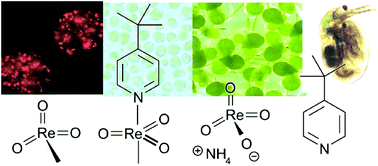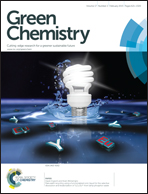Preliminary toxicity and ecotoxicity assessment of methyltrioxorhenium and its derivatives†
Abstract
Methyltrioxorhenium (MTO) is one of the best examined catalysts for the activation of H2O2 in oxidation reactions, particularly olefin epoxidation reactions. The broad applicability and high activity of MTO and MTO Lewis base adducts combined with their selectivity for a variety of processes have also generated industrial interest. In compliance with the basic principles of green chemistry, however, the optimization of the technological properties of chemicals should be investigated in parallel with the minimization of their (eco)toxicological hazard potential. The toxicity of MTO and its complexes towards human health and the environment has not been investigated so far. Performed in close cooperation between industry and academia, the present study aims to fill this knowledge gap by systematically assessing the (eco)toxicity of MTO and its derivatives at different levels of biological organisation. Instrumental analysis was used to investigate the stability and solubility of the target compounds in biological media. The initial evaluation of the hazard potential of MTO shows that it causes strong short-term (eco)toxicological effects and offers preliminary indications of its genotoxic potential. In this light it appears important to prevent the release of MTO into the environment and the exposure of operators; the necessary safety precautions should be taken. The fast decomposition of MTO in aqueous media, on the other hand, leads to perrhenates, which exhibit a much lower (eco)toxicological hazard potential.

- This article is part of the themed collection: 2015 most accessed Green Chemistry articles

 Please wait while we load your content...
Please wait while we load your content...